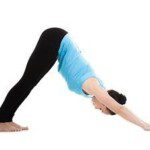Have you lost the range of motion in your shoulders, or is one shoulder is tighter than the other? In this blog post, we are going to discuss ways to assess your range of motion, as well as some strategies for improving your shoulder strength.
The shoulder joint is actually made up of four joints: the glenohumeral joint, acromioclavicular joint, sternoclavicular joint and the scapulothoracic joint. When people think of the shoulder joint, most are referring to the glenohumeral joint, which is a ball and socket joint. This means it has a large range of motion with a small contact point similar to a golf ball on a tee.
While most range-of-motion limitations are restricted in this joint, the cause may be from one of the other corresponding joints or muscles. It is important to assess exactly what motion you are limited in to help determine stretches to resolve the issue.
If any of these motions cause excessive pain versus a limitation or mild tightness, you should consult a physician or physical therapist.
Assessing Shoulder Motion Limitations
- Shoulder Flexion: Stand with your back flat against a wall. Lift both arms until they both go flat against the wall. If your arms fully touch, then there is no limitation. If one arm or both are not touching the wall then you have a limitation. Make sure you are not arching your back to allow them to touch
- External Rotation: In the same position with your back flat against a wall, raise your arms to your sides in contact with the wall until you are at 90 degrees. Then bend your elbows and rotate your arms up so that the forearms and back of your hands are touching the wall (90/90 position). Make sure your back doesn't arch as the arms are in full contact. If you are not in contact, then you may have a limitation.
- Internal Rotation: Similar to the motion above, stand with your back flat against a wall and raise your arms to your side in contact with the wall. Instead of rotating your arms up, rotate them down so that your palms are touching the wall. This is done with the arms dropping or shoulders coming forward. If you are unable to maintain contact with the wall you may have a limitation.
Improving Shoulder Motions
1. Shoulder Flexion

 Shoulder flexion is correlated with a tight upper back as well a tight shoulder joint. Rolling out your spine on a foam roller while having your arms above your head will help to loosen you up and relieve tension.
Shoulder flexion is correlated with a tight upper back as well a tight shoulder joint. Rolling out your spine on a foam roller while having your arms above your head will help to loosen you up and relieve tension.
Additionally, exercises like the downward dog where you are on all fours forming an inverted V with your arms overhead, shoulder retracted, and legs extended also help improve your shoulder motion.
2. External Rotation


You can improve your external rotation by lying on your side and placing the roller below the armpit with the arm lifted. The area you are targeting is your latissimus or lats. Gently roll back and forth to release any tension.
In addition, you can also lie on your back with your elbows tucked into your sides and allowing the hands to drop to the floor in a W pattern. Add in light weights to allow a stretch in the joint.
3. Internal Rotation


A tight chest contributes to tightness in internal rotation, so stretching your pectoralis muscles can allow more rotation. One easy way to achieve this stretch is in a doorway. Grab the doorway frame with your thumbs up and lean forward until you feel a stretch in your chest and not your shoulders.
Alternatively, the sleeper's stretch (pictured right) is used to stretch the inferior capsule of the shoulder. Lie on the side you want to stretch with your arm out straight then bend your elbow to 90 degrees. You then grab the hand with your other hand and move in towards the floor feeling a stretch into your shoulder. Make sure you don't lean forward or backward too much.
SetPT is Here to Help
All these stretches are to be done pain-free with a hold of 30 seconds to 1 minute and repeated 3 times on each side to allow the fibers to gently release. If you are feeling pain or pinching stop performing the stretch and consult your local SetPT therapist.
Your therapist can perform a full assessment to determine the cause and help you formulate a treatment plan for improving your shoulder motion while making sure you are performing each exercise correctly.





